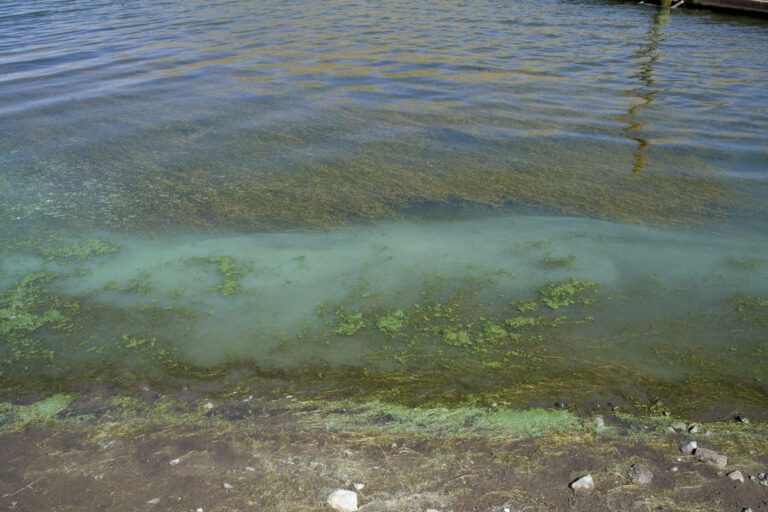The Illinois Environmental Protection Agency and Department of Public Health are warning residents to be on the lookout for toxic blue-green algae for those planning summer activities in Illinois’ lakes and streams. The algae has already been detected in the Illinois River at the Starved Rock Lock & Dam.
According to the press release, summer brings ideal conditions for blue-green algae, or cyanobacteria, growth in what’s called an “algal bloom” if it grows extensively and rapidly. The University of Illinois Extension Office’s Energy and Environmental Stewardship Educator Duane Friend says that the lack of rain this year means slower rivers and thus a greater likelihood of algal blooms.
Eliana Brown, the extension office’s water quality specialist said in an email that residents can identify the harmful blooms because they look like “blue or green paint in the water” and the waterways can have a “thick, puffy surface foam.”
Not all algae is toxic, but “toxicity can’t be detected by sight,” says Brown. She advises anyone who sees blue-green algae to get out of the water immediately and report it. Suspected algal blooms can be reported to the Illinois EPA.
She warns that anyone who comes into contact with toxic algae could suffer adverse health effects. According to the Illinois EPA, symptoms of contact include “rashes, hives, diarrhea, vomiting, coughing or wheezing.” Friend says that contact with the cyanobacteria can cause dermatitis, and that if enough is ingested, it can cause liver damage.
Brown says the young, elderly and immunocompromised are the most at risk if they touch, swallow or inhale water with the toxins. She advises anyone who’s been exposed to the algae to shower immediately and contact the Illinois Poison Center at 1-800-222-1222.
Friend says another adverse effect from the algae are the impacts to the waterway where the bloom grows. When the algal blooms die, they remove a lot of oxygen from the water, which can kill fish and other wildlife and affect drinking water.
According to the Extension Office, the number of toxic algal blooms has been rising over the past two years, and studies show that two big factors are changing climates and nutrient runoff into waterways.
Friend says some farmers are trying to slow nutrient runoff from their fields by implementing “no till” farming and creating “filter strips,” which are strips of land at the edge of fields planted with vegetation designed to slow down water and allow the sediment and nutrients being carried by that water to settle back into the ground, rather than getting washed into waterways.
He says a similar problem is seen in urban and suburban areas when people use lawn care chemicals to create lawns of just grass. Instead of being absorbed into the ground, rainwater runs off into the sewage systems, taking the nutrients from the chemicals with it and creating the conditions for algal blooms. He suggests that residents who want to slow down nutrient runoff can plant rain gardens in their yards, which are areas planted with native plants to slow and reabsorb water like the filter strips used by farmers.
“It’s not just a farm issue, not just an urban or suburban issue, not just a rural issue,” says Friend. “It’s something we all need to think about.”

